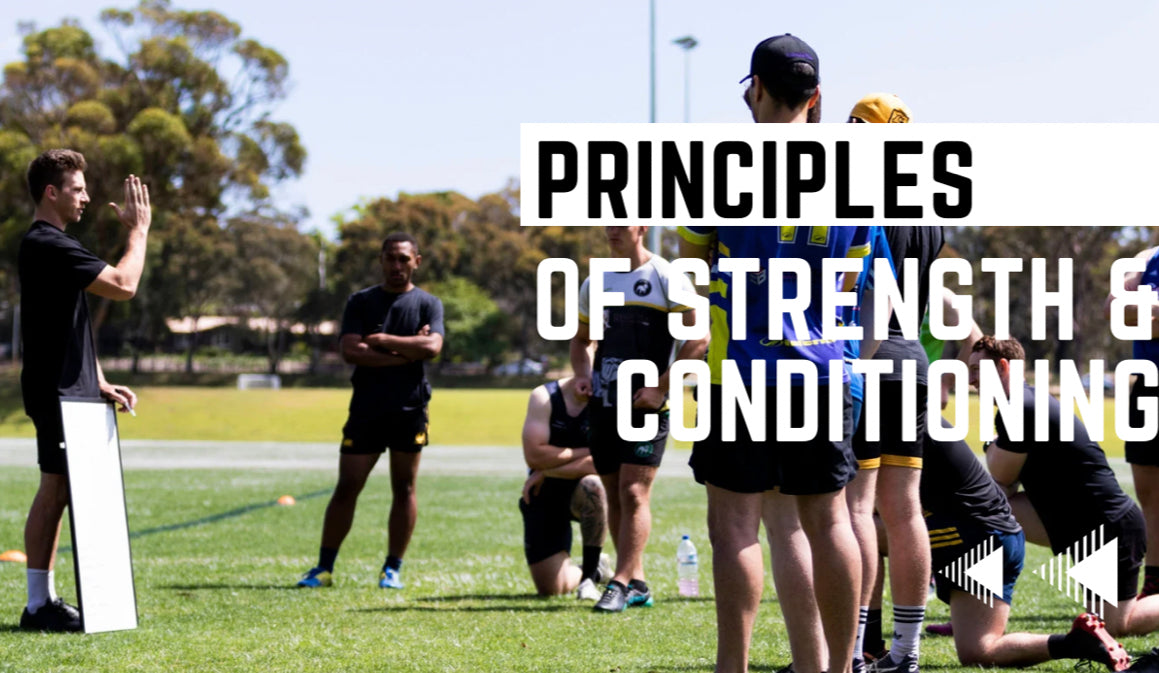
Principles Of Strength & Conditioning
/ˈprɪnsɪpl/nounPrinciple: "A fundamental truth or proposition that serves as the foundation for a system of belief or behaviour or for a chain of reasoning."
Upon starting within the Strength & Conditioning world it can get quite overwhelming.
The amount systems, approaches, exercises you see coaches using can create confusion as to what goes where. And most importantly, why!?That why get's answered when you have these core principles at your disposal.
For example,
You have your bread and butter Principles such as;
Specificity, Overload, Adaptation, Progression, Reversibility and Individualisation.Let's take specificity for example.
I have a strength athlete such as a powerlifter or Javelin thrower.
Within both of these sports, obviously, there is a large need for strength training. The ability to achieve maximal strength is the specificity we would be chasing within our training.
Then we could go a step further.Powerlifting requires you to complete the Bench, Squat and Deadlift within competition. The Javelin thrower does not. The specificity of Squatting, Benching and Deadlifting is a must for the powerlifter. Where as Javelin thrower opens up to a large database of exercises to achieve their Maximal strength output. Even though they can use these exercises, we can use other variations like Box Squats, Trap Bar Deadlifts and so on as their key lifts. Which depending on the athlete could be giving us more return on our exercises compared to if we thought we must be completing the standard squat, bench and deadlift variations.
Let's use another example, Reversibility.
Training adaptations that do not get stressed or stimulated will reverse over time.
The best example i can use for this is Speed.
Not only for the actual maintenance or more importantly to development of new speed. But also from a matter of injury risk management.
It's been found that field based athletes would ideally need to hit 85-95% of their maximum velocity once every 7-10 days.
Without this stimulation we reverse the adaptations on the hamstring and place the athlete at a risk within their matches. The resilience you could say of those tissues start to "reverse".Knowing that qualities reverse and certain tissues need to be stressed in certain settings we have a much greater chance of managing that risk of injury, improving performance and ensuring most of all our athletes stay on the field.
Then we can filter down outside of those core Principles.An example of this is Phase Potentiation. But using this principles outside of it's primary use within strength training and applying for the thought process of preparing for the demands of future phases.
Say for example we have an athlete about to do a high running block.
We can prepare the tissues that usually take the largest demand like the ankle complex and adductors.We can place in preparatory exercises in the weeks/months prior to this large block so when they begin this high running block, they're best prepared.
Second to that even the conditioning demands of this block.
We can build supplement the current running load with off-feet conditioning to provide assistance also to prepare for the stressors ahead.
This is an element of the Principle Phase Potentiation.These are just a few of the Principles in a handbook of many Principles that provide you with clarity in the program design of your clients and athletes.
As mentioned above those 6 Principles are just a few principles in a lift of many that we personal use as the driving factors behind our decisions from program to program. But, most importantly on the fly with our clients and athletes with the scenarios we see on the gym floor at Perform HQ from day to day.
Get your ticket

Get your ticket
We're dedicating a whole day to educating these principles that we use on the 1st Of April. This will be the first seminar of the year and one that will provide the largest format in order to guide your decision making from.
This seminar will give Personal Trainers, Physiotherapists, Strength & Conditioning coaches and Team Sport coaches the skill set to provide a higher value of service to their clients and athletes.
Written by Isaac Davidson.

